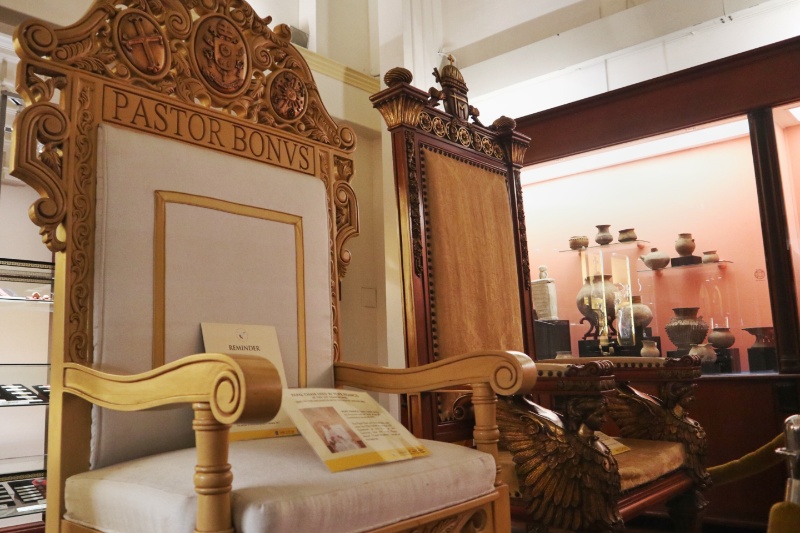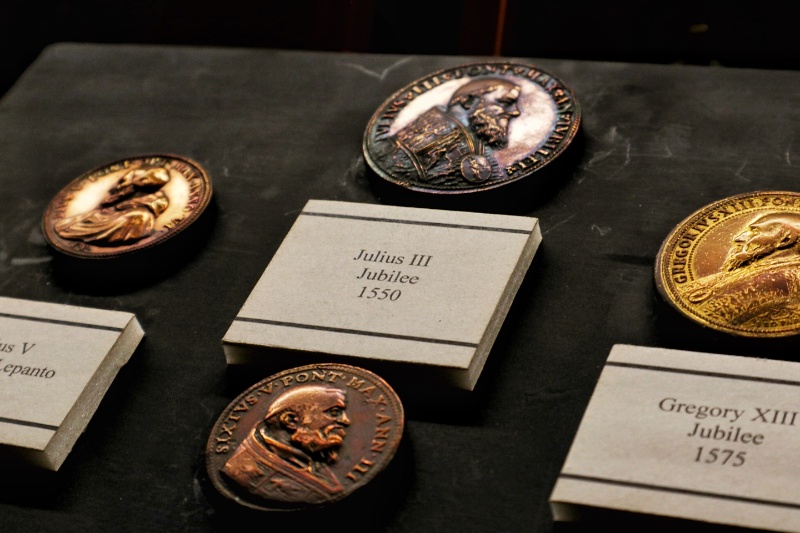
Being the oldest university in Asia, the University of Santo Tomas (UST) served as home to prominent personalities and national heroes of the Philippines.
But more than just a home for Thomasians, the university also keeps the country’s oldest documents and collections through the UST Museum—which is considered the oldest existing museum in the country.
Established in 1869, UST complied with 1865’s Reglamento de Segunda Enseñanza, which required colleges to build a museum of natural history.
The museum now resides in the main building of UST, which was originally built on its Intramuros campus during the Spanish occupation.
Here are the six treasures you should not miss when visiting the UST Museum:
Papal chairs

Being a pontifical university of the Philippines granted by a Roman Pontiff, Pope Leo XIII in 1902, several popes have visited the campus and administered a eucharistic celebration at UST.
Part of the UST Museum’s collection are the papal chairs that were used by popes during the presiding mass in the country.
“Ang lahat po ng popes na nag-visit ng Manila, actually dito sa UST po ginagawa kasi we are connected po sa Vatican,” Yjah Carlos, UST Museum attendant said. She added that the papal chairs were made by Thomasians.

In a 2017 post, the UST Museum said that the chairs reflect the identity of UST as a pontifical and royal university.
Pope Pius XII conferred the “Catholic University of the Philippines” title in 1947 to UST. Meanwhile, it was also granted the “Royal” title in 1785 by King Charles III of Spain.
Coin and memorabilia collection

Dating back to prehistoric times, the UST museum’s coin collection spans centuries of historical and cultural value.
Instead of formally collecting them, the coins on display were initially maintained by Dominican professors out of personal interest until they became part of the UST museum collection.
It participated in the 1895 Regional Exposition of the Philippines during the Spanish colonial period, and since then, the collection has joined other exhibitions in Amsterdam, Vietnam and Paris.
The coin collection has received awards and is occasionally lent to other institutions as part of other exhibits.

Juan Luna paintings

Artist Juan Luna is best known for his painting “Spoliarium”, which won gold at the 1884 Madrid Exposition of Fine Arts. It can be found at the National Museum of Fine Arts.
Visitors can view two other paintings of Luna housed in the UST Museum Hall of Visual Arts.
One is “Playa De Kamakura”, an oil painting on wood Luna made circa 1896 when he was in Japan. The artwork has been part of the museum since 1940 when the UST Museum Art Gallery launched its inaugural exhibition.
Next to it is “Italian Soldier”, a watercolor painting on paper. While it is undated, its earliest written record can be found in a 1966 inventory of the museum.

17th Century Ivory Sculpture Jesus Christ

With a total height and width of 76.5 centimeters and 67.5 cm, respectively, the 17th-century ivory sculpture is the largest of its kind in the country and is hung in the middle of the museum’s Hall of Philippine Religious Images.
There are 65 carved holes in the wooden cross that would have been filled with silver or gold-cases relics.
The whole sculpture is hung in the religion section of the museum and weighs about 6.4 kilos.

Blades and Weaponry
Located on the second floor of the museum, visitors can view the ethnographic artifacts on display that portray the native culture of the Philippines.
It has been grouped by its kind, and one thing the UST museum has to offer is a blade and weaponry collection that showcases the fighting style of each tribal group and their preferred weapons.

Seashell collection

Part of the museum’s Natural History collection, the seashell collection found on the first floor of the museum displays the wide array of seashells that live on our seas, dubbing the Philippines the “Paradise of Shell Collectors.”
During the Japanese occupation, those who were imprisoned on the UST campus were allowed to recheck and complete the taxonomic classification of the seashells.










